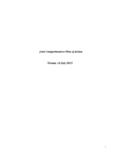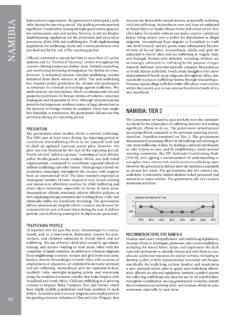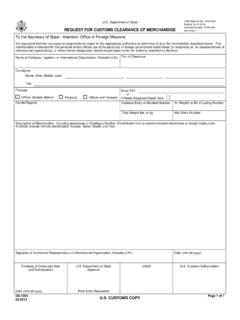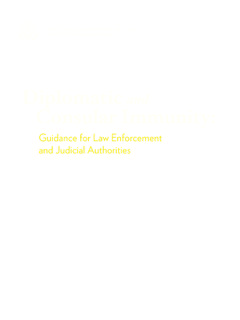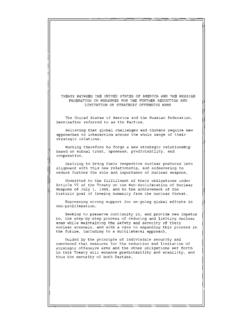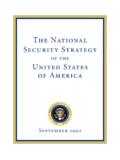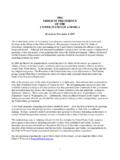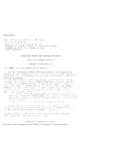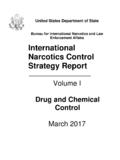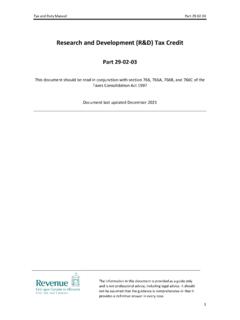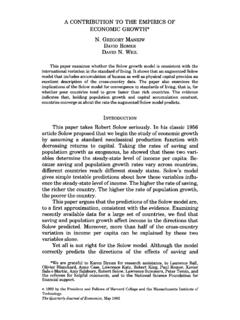Transcription of Competitive Strategy vis-il-vis China and Russia: A View ...
1 Arms Control and International Security Papers Volume 11 Number 6 May 11, 2020 Competitive Strategy vis-il-vis China and Russia: A View from the ''T Suite'' by Christopher A. Ford The Arms Control and International Security Papers are produced by the Office of the Under Secretary of State for Arms Control and International Security in order to make State Department policy analysis available in an electronically-accessible format compatible with "social distancing" during the COVID-19 crisis. Arms Control and International Security Papers Volume I, Number 6 I May 11, 2020 Competitive Strategy vis-a-vis China and Russia: A View from the "T Suite" Competitive Strategy vis-a-vis China and Russia: A View from the "T Suite" by Christopher A.
2 Ford1 In this latest part of the series, Assistant Secretary Ford outlines the approach being taken in the \\T" family of bureaus at the Department of State in support of Competitive Strategy vis-a-vis the People's Republic of China and the Russian Federation, as inspired by the National Security Strategy . This edition of the AC/5 Papers outlines how the "T" family of bureaus at the Department of State2 manages functional and technical programs in order to provide the most robust and effective support possible to foreign and national security policy. In particular, this paper will focus upon T-family support to Competitive Strategy vis-a-vis the People's Republic of China (PRC) and Russia, as outlined in the landmark National Security Strategy (NSS) that was published in December 2017.
3 I. The National Security Strategy The NSS stresses, in particular, the critical national security challenge the United States faces in dealing with what some call its "near-peer" competitors, the PRC and Russia, and provides some key concepts and principles that have helped guide our approach to supporting Strategy . The NSS' focus on inter-state competition signals the United States' steadfast commitment to push back against PRC or Russian attempts to shape a world antithetical to values and interests. In the T family, we discern four key principles from the National Security Strategy to guide our contributions to Competitive Strategy in these respects: 1. The PRC and Russia present distinct strategic challenges to the prevailing rules-based international order, and we must find robust and creative answers to the myriad Competitive challenges their behavior presents; 2.
4 The PRC and Russia present the United States with "whole-of-government" or even "whole-of-system" challenges, and our responses must be analogously broad wherever possible, and must include vigorous public diplomacy and messaging, promoting our values and approaches in order to help us meet the political and economic aspects of this challenge; 3. Across multiple domains, we must limit the revisionist threats our competitors pose to international security and stability. This includes impeding our competitors' efforts to steal or force transfers of advanced technologies that facilitate the modern military power 1 Assistant Secretary of State for International Security and Nonproliferation, and presently performing the Duties of the Under Secretary for Arms Control and International Security.
5 He previously served as Special Assistant to the President and Senior Director WMD and Counterproliferation on the National Security Council staff 2 The so-called "T" family consists of the Bureaus of International Security and Non proliferation (ISN), Political-Military Affairs (PM), and Arms Control, Verification, and Compliance (AVC)-as well as, for functional purposes, the Office of the Coordinator for Cyberspace Issues (S/CCI), which is slated to become the key element of the new Bureau of Cyberspace Security and Emerging Technologies (CSET) that Secretary Pompeo is working to create as part of the T family. Arms Control and International Security Papers Volume I, Number 6 I May 11, 2020 Competitive Strategy vis-a-vis China and Russia: A View from the "T Suite" that they seek in their drive to dismantle the existing liberal international order; and 4.
6 We must vigorously build and lead coalitions of allies and partners and ensure they contribute effectively to successfully meeting these challenges. We must also encourage burden sharing and help expand our allies' access to the capabilities and partnerships that they will need to stand with us in challenging the PRC and Russia's global ambitions. Yet despite our determination to compete effectively, we must simultaneously remain open to diplomatic engagement. The United States will thus continue to seek cooperation on shared interests with Beijing and Moscow where possible -including on arms control and peacekeeping measures that meet our security interests and those of international peace and security.
7 II. The Competitive Challenge These critical elements of guidance inform the approaches the T family of bureaus take, and that we are working to refine on an ongoing basis. Over the past 20 years, both Beijing and Moscow have made considerable strides in building up their geopolitical strength vis-a-vis the United States, empowering them to act with increasing aggressiveness against interests and the postwar international system. Although the United States did not always recognize this challenge, we are now aware and responding. In the early post-Cold War years, Russia did not initially seem -or act-like a direct threat to the United States or to the democracies of the West. Nevertheless, Moscow made its revisionist intentions visible in 2008 when Russian forces overtly crossed an international border to seize parts of the country of Georgia - a presaging of its aggression against Ukraine in 2014 and 2015.
8 Similarly, the PRC tried to keep its own ambitions concealed following Deng Xiaoping's famous "24-character Strategy " that China should "hide its capabilities and bide its time" by building its strength quietly while awaiting future opportunity-a maxim that hewed so closely to the advice of the late-19th century Japanese diplomat Hayashi Gonsuke in the wake of Japan's wars against China3 that one wonders whether Beijing had looked to Japanese imperialism of that period for lessons. Under Hu Jintao and then Xi Jin ping, however, the PRC seems to have abandoned Deng's "hide and bide" approach in favor of increasingly barefaced geopolitical revisionism. Led by Xi, the Chinese Communist Party (CCP) now quite openly seeks to seize a dominant position in Asia, at the very least, and to acquire military capabilities stronger than those of any other state by 2049 -the centenary of the CCP's founding of the PRC.
9 Although these Chinese and Russian governments' trajectories have long been examined, and have been becoming increasingly obvious, it took the insight and the historical contribution of President Trump's National Security Strategy to call foreign and national security policy back to a focus on great-power competition. A. People's Republic of China The PRC seeks to have a military more capable than any other in the world by 2049, hegemony in the Asia Pacific region (and one that implicitly erodes presence), leading positions within international organizations, and a dominant position in the advanced technologies essential to military power. With these achievements, the PRC hopes to claim what it sees as its natural hegemonic place at the center of a world system that generally defers to Beijing's interests.
10 To these ends, the PRC seeks to expand its so-called "comprehensive national power" (CNP) through a mix of political, economic, military, and "soft power" initiatives. It approaches this effort on a whole-of-system basis capable of, and dedicated to, mobilizing every aspect of Chinese society via the coercive power of the CCP police state. The PRC's effort to expand its CNP includes a significant expansion of the capabilities of the People's Liberation Army (PLA), including its nuclear forces, with an emphasis upon high-technology tools that can help disrupt or completely deny access to key areas of the lndo-Pacific in a crisis. In this respect, however, Beijing still 3 Baron Hayashi had advised his countrymen to be patient and not too quickly reveal Japan's imperialist objectives: "At present Japan must keep calm and sit tight, so as to lull suspicions nurtured against her; during this time the foundations of national power must be consolidated; and we must watch and wait for the opportunity in the Orient that will surely come one day.
